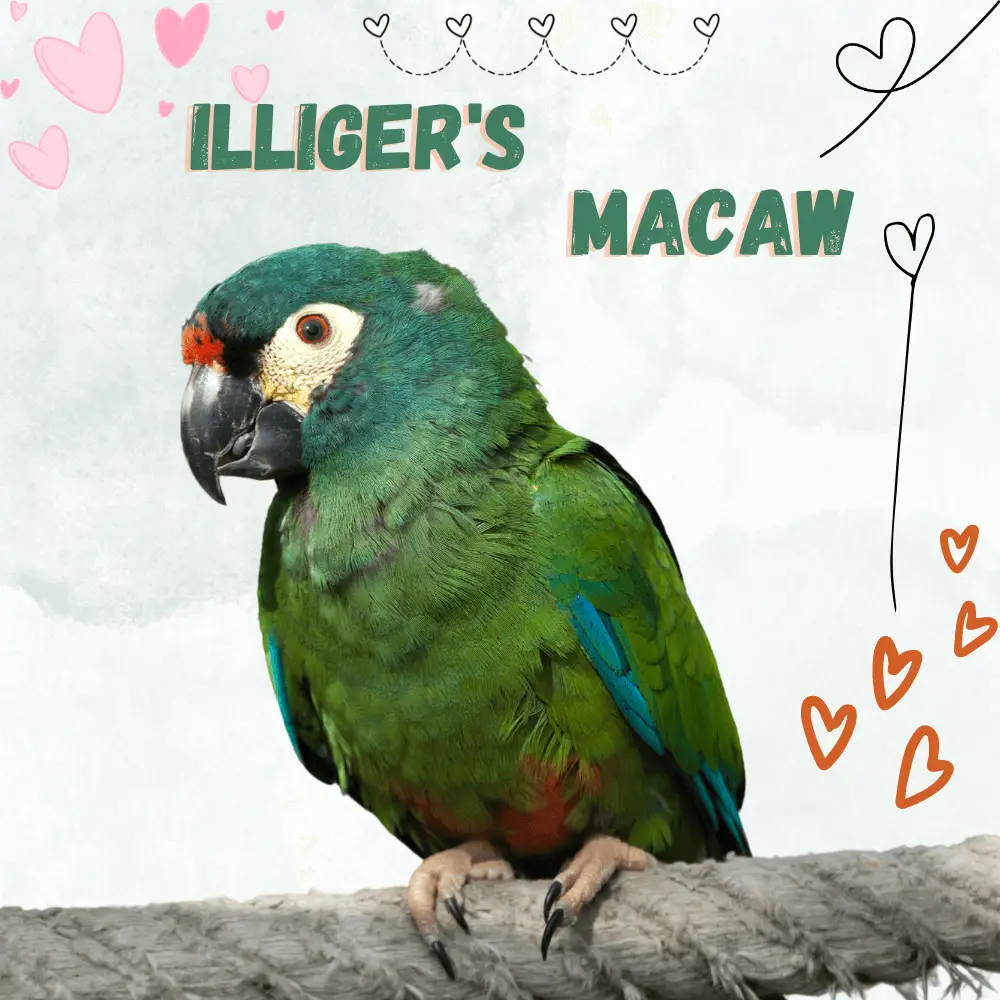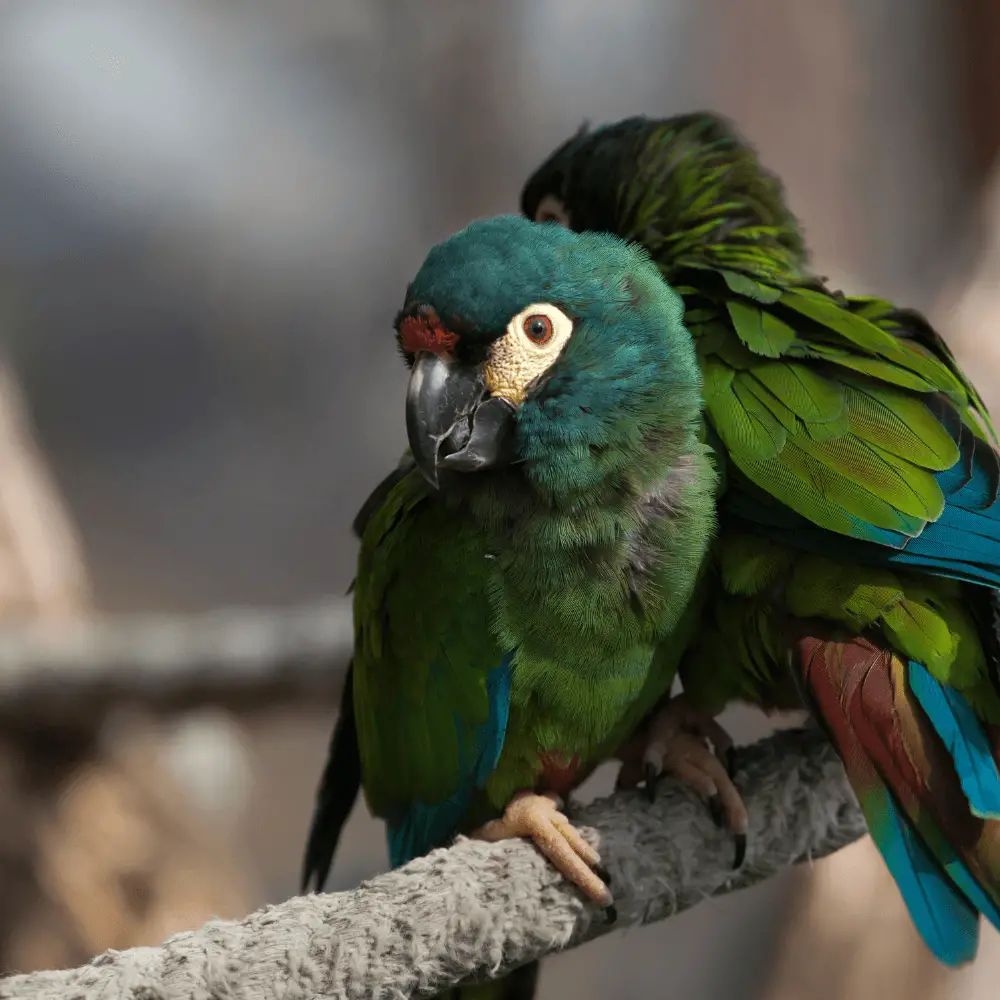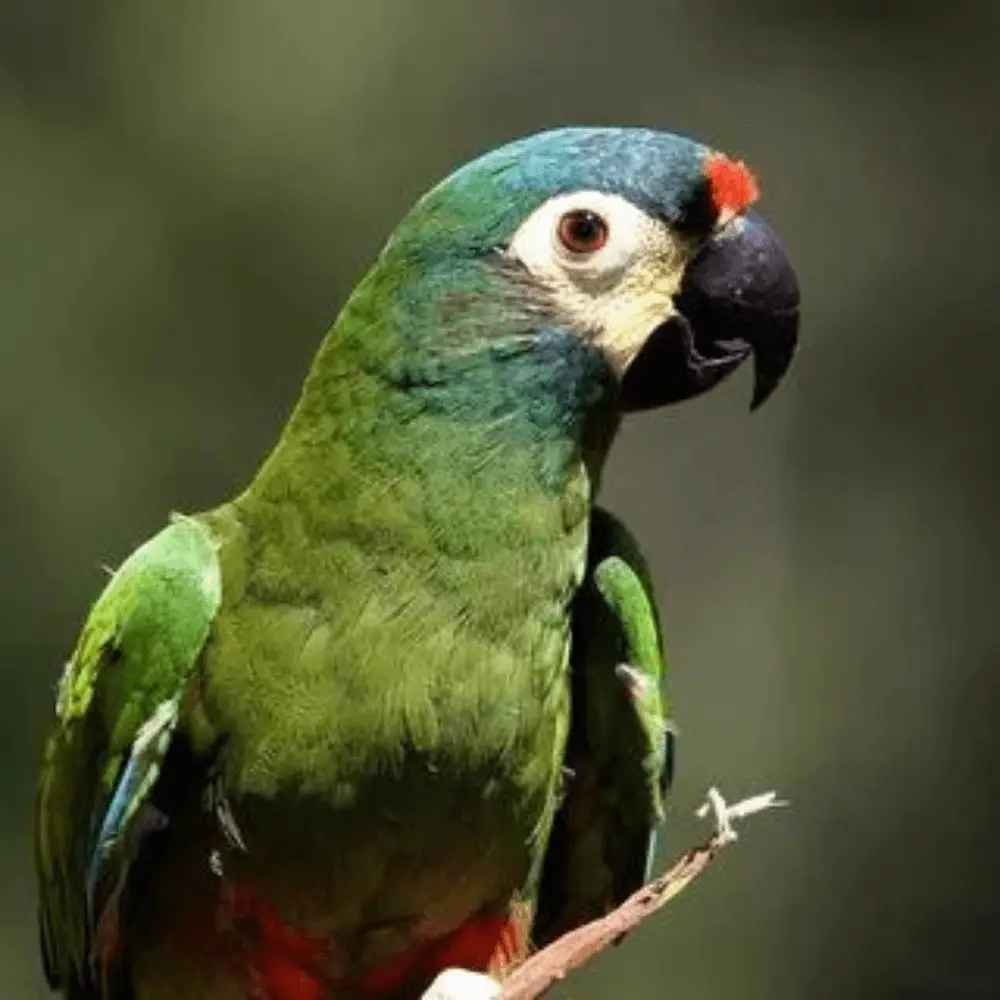
Illiger’s Macaw: (Primolius Maracana) is a small macaw that has a front marked with a narrow band of black color that fades into blue in the area of the crown; the earmuffs and both sides of the neck are blue.
The upper parts are olive-green with a slight tinge in the rump and upper tail-coverts. Small, large, and medium inner coverts are green; the large outer coverts are blue.
The flight feathers color blue above, (some green in secondary schools), olive color yellow below. The lower parts are Green, a little more yellow than the upper part. From above, the tail is mostly blue, but the central rectrices are green, Opaque red in the center and with blue tips; below, the opaque yellow olive tail.
The peak color of the OS, Base black; nu skin de la lords Yes cheeks above gray with a bluish tint and crossed in front by rows of small black feathers: the iris Yellow; pink gray legs.
Both sexes alike; Female plumage is possibly smaller and duller, compared to males.
The immature ones have paler plumage and less red coloring in the front. The red spots in the abdomen and the back are spotted with yellow. Edges of horn color in its peak. The eyes are brown and the tail is short.
- Order: Psittaciformes
- Family: Psittacidae
- Genus: Primolius
- Scientific name : Primolius maracana
- Quote: ( Vieillot , 1816)
- Protonimo : Macrocercus maracana
- Origin: Brazil, Paraguay, Argentinian
- Character: Shy and quiet
- Longevity: 30 years
- Height: 43cm.
Habitat

They inhabit tropical and subtropical forests, coniferous and deciduous forests (including the Atlantic rainforest and Cerrado savannah ) with an apparent preference for edges or forests near water.
At the northern end of the Bay, Brazil, lives in wooded galleries Tabebuia Caraibe in the caatinga al junto Spix macaw area, where the birds avoid flying in open terrain, preferring to stay among the trees.
There are reports of these birds at 1,000 meters above sea level. Usually in small flocks except when playing.
Distribution
Distributed by eastern South America from the south Amazona.
In Brazil stretching from the South of the For, South of Maranhão (including a record on the coast) and west by Piauí, Pernambuco, Bay, Tocantins, Goiás Yes Minas Gerais, Brazil, Mato Grosso, with recent recolonization in the state of Rio de Janeiro and Rio Grande do Sul records up to 1930.
In eastern Paraguay and time in the northeast of Argentina, in Missions, and north of Currents.
It appears to be residents, with a significant decrease in recent decades, probably due to large-scale deforestation.
In rare and local news; the rest of the population is common only in Sierra Negra, Pernambuco, Yes Serra Cachimbo, and For in Brazil.
Rare in Paraguay, where it seems to persist in small, fragmented populations; once common in Argentina, now apparently extinct. A small number in captivity.
Reproduction

Evidence of breeding in December and February. Nest in a tree cavity. The average clutch size is three to five eggs and the incubation period is 25 days.
Food
Watch birds take seeds of Melia azedarach introduced in northeast Brazil; no further feeding details, although they have been known to forage in grain and corn fields as well, leading to their persecution by farmers.
Endangered

• Demographic trend: Degressive
The population of the Illiger’s Macaw is estimated to be in the band of 2,500-9,999 individuals in total, which equates to a band between 1,667-6,666 mature individuals.
Moderately rapid and permanent population declines are suspected this may be due to habitat loss, capture for the cage bird trade, and persecution as a crop pest.
Its decline is only partly explained by deforestation since it has disappeared from areas where suitable habitats have apparently disappeared ( Juniper and Parr 1998 ).
- Current conservation actions:
CITES Appendix I and II.
Has been found in many protected areas in Brazil, but Serra Cachimbo is unprotected and the Serra Negra Biological Reserve is only 10 km away ( Wege and Long 1995, Clay et to the., 1998 ).
Twenty birds were released in Bahia, Brazil, with the aim of correlating differences in the ability to survive in the wild with differences in history in captivity ( Waugh, 1997 ).
- Proposed conservation measures:
Merge data from recent specimen records to provide a better assessment of Illiger’s Macaw distribution and status.
Monitor known populations to assess trends.
Study the impact of trade.
Habitat protection in areas known to harbor high concentrations of the species and developing captive breeding programs to further expand this.
Illiger’s Macaw in Captivity
During the 1970s and 1980s, the Illiger’s Macaw was considered quite rare in captivity in the United States and in other countries. Florida’s Busch Gardens were one of the first successful breeding facilities and are likely responsible for this species being so common in aviaries across the country today.
The fact is that the Illiger’s Macaw has become very common and also works in the pet market while it is considered vulnerable in the wild.
Evidence demonstrates that the Illiger’s Macaw adapts well to captivity. Despite the apparent inbreeding, this species remains prolific in captivity, and a minimum of three (or possibly more) aviary generations have been obtained throughout the United States.
Today there are several generations of this species in captivity. As this species is very rare in nature, they are increasing the quantities in captivity. This species would be a perfect candidate for future release programs.
They report a living specimen after 31 years in captivity. In captivity, these animals can be bred from the age of 6
Mutations in captivity :
There are rumors in Europe of the existence of a variety of Lutino. although there is no proof of the fact by a photograph or other forms of documentation. No other mutations have been documented.
SOURCE: Parrot family tv
Related article:




















